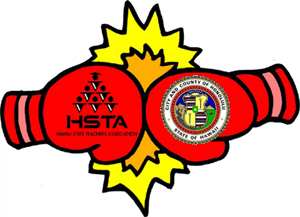
A 1-2 punch of tax proposals
by Rachelle Chang, Better Hawaii, February 7, 2017
So far, 2017 has delivered a one-two punch for Hawaii residents.
In January, as we were still reeling from holiday celebrations and new year’s resolutions, the Hawaii State Teachers Association (HSTA) proposed a constitutional amendment to add a property tax surcharge on residential investment properties as well as a visitor accommodations surcharge (Honolulu Star-Advertiser, “HSTA pitches property tax, hotel surcharge to hire, retain teachers,” 1/24/17). The surcharges could raise $500 million a year for hiring and retaining teachers.
A week later, Honolulu Mayor Kirk Caldwell proposed offering the State of Hawaii a larger share of the of the 0.5% general excise tax surcharge that was intended to fully fund the rail project, in exchange for extending the surcharge in perpetuity. The State’s “share” is currently 10% (Honolulu Star-Advertiser, “Mayor proposes larger share of rail tax for state,” 2/1/17).
Is it reasonable to require homeowners to pay higher taxes for a service that is unrelated to their home or property? Is it reasonable to require non-residents to pay a dedicated tax for Hawaii public education? Is it effective to create a dedicated funding source that has little oversight by Hawaii legislators and taxpayers?
Public education is funded by state income taxes and the general excise tax. Hawaii’s property taxes can barely pay for the current level of city services; and the transient accommodations tax (TAT) has already jumped to 9.25% in 2017. It’s disingenuous to compare Hawaii’s real property taxes and TAT to other U.S. cities – Hawaii residents have higher costs of living and lower availability of land and affordable housing than other mainland cities; and visitors face higher transportation costs and time commitments just to travel to Hawaii. In greater numbers, homeowners could be forced out of their homes and visitors will choose to vacation elsewhere.
Is it reasonable and effective for the City and County of Honolulu to claim that they need to make the rail surcharge permanent, while simultaneously claiming that they don’t need the full amount of the surcharge?
The Honolulu rail is funded by the general excise tax surcharge. Without another extension, or making the surcharge permanent, Honolulu rail may not be built. But offering the State of Hawaii an even higher percentage of the general excise tax surcharge seems like a bribe to Hawaii legislators in exchange for their support.
For some perspective, in Fiscal Year 2016, collections of Honolulu’s county surcharge totaled $259.2 million, according to the “Hawaii Department of Taxation Annual Report 2015-2016” (page 30). The State kept 10% of the surcharge collected or $25.92 million – which is more than the Department of Taxation’s entire Fiscal Year 2016 operating budget of $24 million (page 37).
Do you think these tax proposals are good ideas? How do you rank public education and Honolulu rail on your list of priorities for Hawaii?